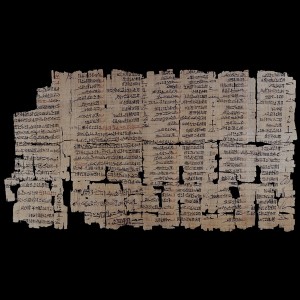‘If a man sees himself in a dream at night tying up someone else in order to harm him, good. It is a sign of destroying his enemy’s power of speech and conquering him.’
‘If a man sees himself in a dream turning his face to the ground, bad. It is a sign that something might be required of him by death.’
Apparently a person who had had a dream would consult the priests for an interpretation. They would then confer with the manual to find a similar dream or precedent for the inquirer. In Genesis 40, Pharaoh’s two officials had dreams in prison. They were upset because ‘we both had dreams’… ‘but there is no one to interpret them’ (Genesis 40-8). Obviously, in prison they did not have access to the priests and the dream interpretation manuals, but they realized that their dreams had potentially significant meanings.
In the case of these officers, one interpretation was positive- the cupbearer was restored to his position; the other was negative – the baker was put to death.
In Genesis 41, Pharaoh has his dream of seven sleek cows coming out of the Nile, followed by seven gaunt and sickly cows that devour the healthy seven. In the morning he sent for ‘the magicians and wise men of Egypt’ to interpret the dream. It is worth noting that the Hebrew word translated as ‘magicians’ is hartummim, which derives from a conflation of the Egyptian expression hry-tp h ry-hb, meaning ‘chief lector priest’. A priest of this title typically read and handled liturgical and magical texts.
An inscription has survived from the Hellenistic period in Egypt that recalls a period of seven years of famine which took place in the days of Pharaoh Djoser (c. 2700 BC), builder of the first (stepped) pyramid. While this event, if a historical memory, would have occurred nearly a thousand years before the period of Joseph, it illustrates the unpredictability of the Nile, the lifeline of Egypt.
James K. Hoffmeier, The Archaeology of the Bible, Lion Hudson plc, 2008. pp. 47-48.
